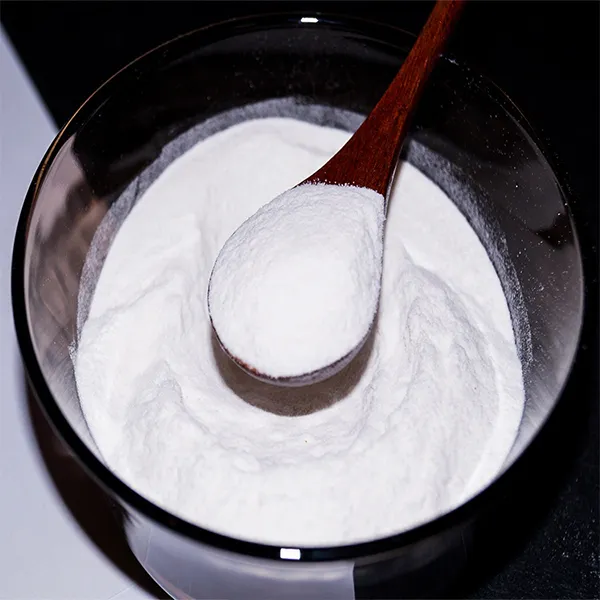Understanding HPMC Price Dynamics A Comprehensive Overview
Hydroxypropyl Methylcellulose (HPMC) is a versatile polymer widely used in various industries, including pharmaceuticals, food, construction, and personal care. As a non-ionic, water-soluble cellulose ether, HPMC has gained significant popularity due to its unique properties, such as film-forming ability, thickening, emulsifying, and stabilizing characteristics. However, like many industrial materials, the price of HPMC can fluctuate based on a myriad of factors, making it essential for businesses and consumers to understand the dynamics that influence these price changes.
1. Global Supply and Demand Trends
The price of HPMC is largely affected by global supply and demand dynamics. On one side, the increasing demand for HPMC in the pharmaceutical industry for drug formulation and controlled-release applications continues to rise. As the global population ages and the demand for medications increases, pharmaceutical companies seek reliable excipients like HPMC to enhance drug delivery systems. On the other hand, the production capacity of HPMC is influenced by the availability of raw materials, such as cellulose, which is derived mainly from wood pulp or cotton. Any disruption in the supply chain can lead to price fluctuations.
2. Economic Factors
Economic conditions play a critical role in determining HPMC prices. For instance, during economic downturns, the demand for construction materials may decline, subsequently affecting HPMC prices within the construction sector. Conversely, when economies grow, infrastructure projects and construction activities increase, driving up the demand for HPMC for applications such as cement and tile adhesives. Additionally, exchange rates and inflation can also impact the cost of raw materials and production, thus influencing the final price of HPMC in various markets.
3. Production Costs
The manufacturing process of HPMC involves several stages, including cellulose extraction, chemical modification, and formulation. Variations in energy costs, labor expenses, and technological advancements directly impact production costs. When energy prices rise, for instance, manufacturers may face increased operational costs, which can lead to higher HPMC prices. Additionally, advancements in production technology can streamline processes, potentially lowering costs and stabilizing prices.
price hpmc

4. Geographic Factors
Geographical location also plays a vital role in HPMC pricing. Regions rich in raw materials may have lower production costs, thus affecting the local pricing structure. Moreover, logistics and transportation costs can vary significantly between countries and regions, contributing to price variations. For instance, countries that have robust infrastructures for transporting chemicals may see lower logistical costs, making HPMC more competitively priced in that region.
5. Regulatory Environment
The regulatory landscape surrounding chemical manufacturing can also influence HPMC prices. Stricter regulations regarding production practices, safety standards, and environmental impacts may increase compliance costs for manufacturers. These added costs are often passed on to consumers in the form of higher prices. Conversely, regions with more lenient regulations may see lower production costs, leading to competitive pricing.
6. Future Market Trends
Looking towards the future, the HPMC market is expected to experience growth, driven by emerging applications and technological advancements. The increased utilization of HPMC in the production of bio-based and environmentally friendly products aligns with global sustainability trends. This could lead to an increase in demand, potentially affecting prices as manufacturers invest in sustainable practices.
Conclusion
In conclusion, the price of HPMC is influenced by a complex interplay of factors including global supply and demand, economic conditions, production costs, geographic considerations, and regulatory environments. As industries continue to evolve and adapt, monitoring these factors becomes increasingly essential for stakeholders in the HPMC market. By understanding these dynamics, consumers and businesses can make informed decisions regarding procurement and pricing strategies, ensuring they remain competitive in a constantly changing landscape. As the demand for this versatile compound continues to grow, keeping a close eye on HPMC price trends will be vital for success in various sectors.
-
A Comprehensive Guide to Methyl Ethyl Hydroxyethyl Cellulose: Applications and Industry InsightsNewsNov.24,2025
-
Understanding Methyl 2 Hydroxyethyl Cellulose: Uses, Benefits & Industry InsightsNewsNov.24,2025
-
Hydroxyethyl Methyl Cellulose HEMC: Industrial Uses, Benefits & Future TrendsNewsNov.23,2025
-
HEMC Cellulose: Versatile & Sustainable Industrial Polymer | YoungcelNewsNov.23,2025
-
Methyl Hydroxyethyl Cellulose: Versatile Building Block for Industry & SustainabilityNewsNov.23,2025
-
CAS 9032 42 2: Understanding Polyvinyl Alcohol's Impact on Industry & SustainabilityNewsNov.22,2025




